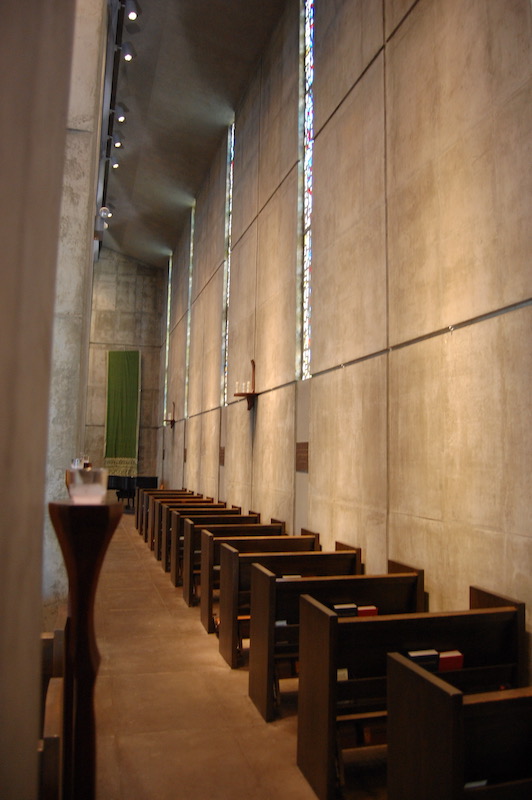The Thinness of the Air
Between Maundy Thursday and noon on Good Friday, Christ Church in Sausalito, California, where I once served, holds vigil in its sacristy. Parishioners take hour-turns all night long and come into the small space, read Scripture, pray and sit with Jesus in the way that the disciples failed to do in the Garden of Gethsemane.
I remember the first time I reported to the sacristy for my hour of prayer. It was five in the morning, and the person sitting vigil before me smiled as she silently walked out. I stood in the faint aura of worn candles, unsure of what to do next. After a minute, I sat down and did nothing. I waited, and as I waited, I realized something noteworthy about that small space. The room on that morning was not meant for engaged activity; it was meant for waiting. For prayer. People had been praying in that room all night long, and the prayers had somehow combined with the oxygen, so much so that the air itself had become prayer. Prayer hovered like mist in the room, permeating the old redwood walls and vinyl floor tiles. Prayer rose up through in the rafters, and leaked out into the early morning air. That substance of prayer had marked the place as holy, extraordinary, set-apart by the earnest care pilgrims had devoted to both God and the people they prayed for in that space.
Many people tell me about the first time they entered another church I served, St. Stephen’s in Tiburon, California. Some of them were struck by the warm walnut altar, and people gathering around it to receive communion. Others were struck by the simplicity of the christus rex, a crucified yet risen and pure Jesus. Still others were struck by the cold beauty that emanates from austere concrete when it is animated by dots of blue and red sunlight. Uniformly people express the sentiment that the space itself is special, made holy by Sunday mornings. The presence of the faithful, the children, and sometimes even the dogs.
Life begets life, and holy begets holy. Some places and spaces are, as mystics call it, thin. Thin places are where the space between the divine and the human, the eternal and the temporal, this world and the next, is small. I’ve never heard anybody call a “superfund” site, “thin,” but I often hear St. Stephen’s, the Tetons, and even the Taj Mahal described as “thin.”
Thin space is holy, and I’m wondering, how do we convey to our children the value and sense of holy spaces – in a way that won’t alienate them, but instead will invite them into what we do on Sunday mornings?
The attention we give to space and place is important, and how will our children ever learn about these things if we, ourselves, aren’t actually offering attention? I don’t know anyone who would text or check an SF Giants’ score during a service, or who would check to see who called that very last time the phone vibrated, but I hear that it happens. I don’t know anyone who would transact business (even church business) during the peace, or talk during the offertory, but I am guessing that also happens. I don’t know anyone who, during the sermon, would replay the argument they just had with their spouse over breakfast, but it happens. Of course there are distractions, but in offering God our all, we leave our half-selves behind. We enter the sacred space to offer our souls to God with gusto. Gusto – now that is the mark of a space our kids can translate as being holy. A fun place for children, and for all, a place that changes lives.

